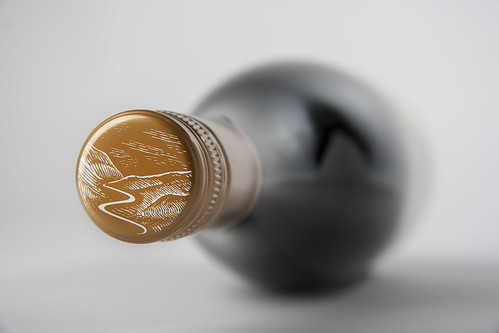
Few outside our own country have enjoyed the diverse and world-class wines made coast-to-coast in Canada. Most aren’t even aware quality wines are possible in a cool-climate such as ours.
It is a young industry, growing by leaps and bounds, and the wines that are made in nearly every province, especially B.C., Ontario and Nova Scotia, are simply outstanding not in spite of our cool climate, but because of it.
The world is waking up to the fact that the high alcohol, low acid wines from hot climate growing regions just don’t cut anymore. They lack finesse and are a major problem when pairing with the meal of the day. They just don’t work.
Canadian wines are built for food, whether it’s a crisp Niagara Riesling, the mineral-laden Pinot Noirs from Prince Edward County or the Cabernet Francs from the Okanagan, there is a wine being made our your own soil for everything you put on the table.
We do have our problems, however, tasting the greatness from all our winemaking regions in the country. We just can’t get a lot of wines from B.C. (if you live outside of B.C.) or Ontario and Nova Scotia if you don’t live in those provinces.
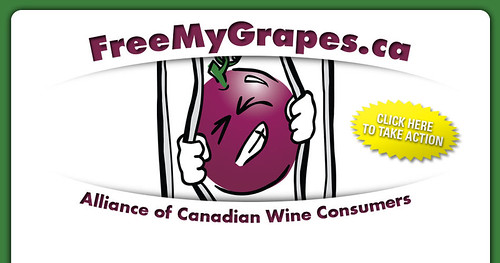
Archaic federal laws make it illegal to buy a case of good wine in one province and then take it home to another province. It’s part of a Prohibition-era law that prohibits moving alcohol across provincial borders.
Here’s the language from the Importation of Intoxicating Liquors Act, passed in 1928: “No person shall import, send, take or transport, or cause to be imported, sent, taken or transported, into any province from or out of any place within or outside Canada any intoxicating liquor.”
Thankfully there are people like Okanagan Conservative MP Dan Albas, who is championing a private member’s bill, C-311, that would give Canada’s small wineries the opportunity to sell and find new markets for their products outside their home provinces. He is aided greatly by Shirley-Ann George, who is leading a Free My Grapes grassroots campaign to change the law.
They are true Canadian wine heroes for taking a fight that we as wine-loving Canadians should applaud and support.
I am fortunate to be able to taste a fair amount of wine from most of the regions in Canada. I consider it a privilege to taste these wines while most outside of the province where they are made do not have the same opportunity.
A shockingly small amount of B.C. wine makes it into Ontario’s government-run LCBO liquor monopoly and even less from Nova Scotia can found on our shelves. It is far easier to get a wine from the most obscure wine regions on earth than it is to get a good bottle of Canadian wine from out of province.
Hopefully that will change soon.
I have recently tasted some fine spring releases from two Okanagan wineries — Tinhorn Creek and JoieFarm — as well as Rosehall Run in Prince Edward County and an obscure variety made by Coffin Ridge near Owen Sounds in Ontario.
Here’s what I liked:
Tinhorn Creek
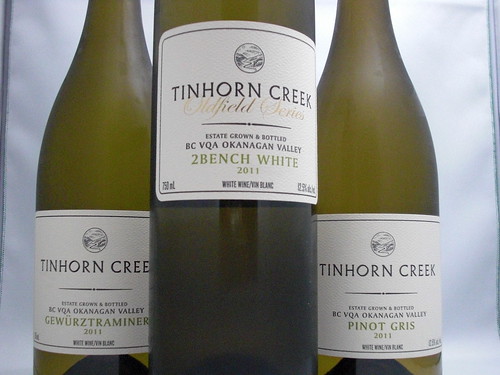
This Okanagan winery, located south of Oliver, B.C. in the famed Golden Mile wine-growing district, is perched majestically on a hillside overlooking estate vineyards, sagebrush and the old mining creek that is its namesake.
Winemaker Sandra Oldfield crafts her wines from 150 acres of estate vineyards on two distinct benches. The 100-acre Diamondback Vineyard on the Black Sage Bench is planted with a mix of red and white varieties, primarily Pinot Gris, Merlot and Cabernet Franc. The 50-acre Tinhorn Creek Vineyard on the Golden Mile Bench is also planted with a mix of red and white grapes, but primarily features Gewürztraminer.
The winery produces wines in two tiers:
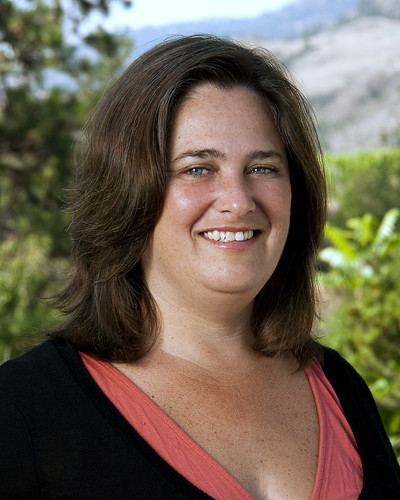
• the single-varietal series includes a Gewürztraminer, Pinot Gris, Chardonnay, Cabernet Franc, Pinot Noir and Merlot.
• the Oldfield Series wines are selected each year for the winery’s top tier, winemaker Oldfield’s signature wines. This tier provides Oldfield with a playground for experimentation and is a creative showcase for the best wines from each vintage.
It should be noted that Tinhorn Creek was the first winery in Canada to bottle its entire portfolio with Stelvin screwcap.
Tinhorn Creek is represented in Ontario by Vinexx and occasionally some wines will make it on to Vintages shelves.
Tinhorn Creek Pinot Gris 2011 ($18, 89 points) – Pinot Gris is making a statement in the Okanagan with a pretty consistent style throughout the valley. Oldfield made this wine in a fresh style. Some of the juice went through Malolactic fermentation to give the wine added mouth feel. The nose shows fuzzy peach, melon and a melange of stone fruits. There is good verve and energy on the palate with mouth-watering apple fruit, peach and pear notes. It’s very clean through the finish.
Tinhorn Creek Gewurztraminer 2011 ($18, 87 points) — Not quite as textured, ripe or unctuous as the previous vintage (which I rated at 90 points) but it still shows exotic lychee-clove-musk notes on the nose with grapefruit and pear notes. It’s made in a slightly drier style with good, vibrant acidity that marries well with the grapefruit and pear fruits.
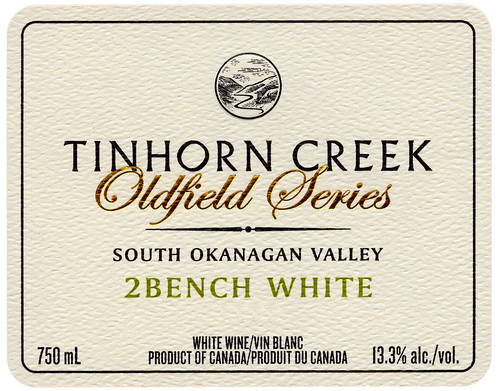 Tinhorn Creek Oldfield Series 2Bench White 2011 ($23, 90 points) — Oldfield’s proprietory white blend, with some of the varieties planted specifically for this wine, includes 52% Chardonnay, 31% Sauvignon Blanc, 11% Viognier, 3% Semillon, and 3% Muscat, some of which is co-fermented. The wine sees no oak, does not undergo Malo and is made in a fresh, aromatic and fruity style. An expressive nose of melon, tropical fruit, gooseberry, garden herbs and a gentle squeeze of citrus. It’s quite juicy on the palate but balanced out by a firm core of acidity to go with layered peach, melon, tropical fruits with a nice clean finish. Great spring sipping wine.
Tinhorn Creek Oldfield Series 2Bench White 2011 ($23, 90 points) — Oldfield’s proprietory white blend, with some of the varieties planted specifically for this wine, includes 52% Chardonnay, 31% Sauvignon Blanc, 11% Viognier, 3% Semillon, and 3% Muscat, some of which is co-fermented. The wine sees no oak, does not undergo Malo and is made in a fresh, aromatic and fruity style. An expressive nose of melon, tropical fruit, gooseberry, garden herbs and a gentle squeeze of citrus. It’s quite juicy on the palate but balanced out by a firm core of acidity to go with layered peach, melon, tropical fruits with a nice clean finish. Great spring sipping wine.
Tinhorn Creek Oldfield Series 2Bench Rose 2011 ($23, 89 points) — Oldfield takes her favourite grape variety (Cabernet Franc, in case you haven’t been paying attention) and gives it the rose treatment to come up with this highly likeable and flavour-packed thirst-quencher. Made in a deliciously dry style with rhubarb, cranberry and cherry-strawberry aromas. That red fruit package flows to the palate seamlessly with a nice refreshingly dry finish. A go-to summer rose for every day gratification.
JoieFarm
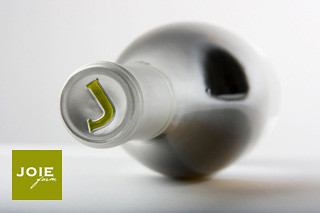
JoieFarm is owned and operated by Heidi Noble and Michael Dinn and is located on the Naramata Bench in the Okanagan Valley.
This winery gets its inspiration from the grape varieties grown in Alsace and Burgundy, France. That style is reflected in the eclectic, yet wonderful and unique, portfolio of wines that defines this winery.
Nobel and Dinn are not only interested in making wines in the Alsace and Burgundy style because they love them but also because they feel those varieties thrive and are particularly relevant to the Naramata Bench.
JoieFarm, for the most part, makes highly aromatic wines with hallmark freshness and clean flavours. With a small production of 9,500 cases, their wines sell out quickly and have become a favourite for restaurants from B.C. to Ontario.
The wines can be found at many restaurants in Ontario (including Treadwell Farm to Table Cuisine in Niagara) and occasionally at Vintages. The winery is represented in Ontario by the Lifford Wine Agency and wines can be purchased through its consignment program.
Here’s what I liked from the spring release:
JoieFarm Rose 2011 ($21, 88 points) — The blend changed slightly from the 2010 vintage with a bit of Pinot Meunier and Pinot Gris added to the Pinot Noir and Gamay. It’s highly aromatic with pure cherry-raspberry notes and a whiff of herbs. It’s slightly off-dry on the palate and delivers a stream of red fruit pleasure backed up by firm acidity through the finish. Clean, fresh and delightful.
JoieFarm Unoaked Chardonnay 2011 ($23, 89 points) — Made in a style that closely resembles Chablis with a nose that shows fresh green apple, pear and minerality. The fruit is forward on the palate with pronounced apple, pear and a defining wet-stone minerality through the finish.
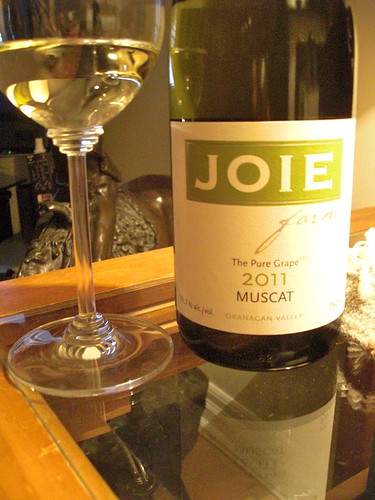 JoieFarm Muscat 2010 ($23, 90 points) — Not sure anyone makes a wine quite like this one in Canada. Such personality and flare crafted from both yellow and white Muscat. It starts with a big burst of white peach on the nose with lemon-lime accents. It shows more citrus and orange rind than peach in the mouth with just a touch of sweetness all balanced out by the acidity of the cooler 2011 vintage in the Okanagan.
JoieFarm Muscat 2010 ($23, 90 points) — Not sure anyone makes a wine quite like this one in Canada. Such personality and flare crafted from both yellow and white Muscat. It starts with a big burst of white peach on the nose with lemon-lime accents. It shows more citrus and orange rind than peach in the mouth with just a touch of sweetness all balanced out by the acidity of the cooler 2011 vintage in the Okanagan.
JoieFarm A Noble Blend 2010 ($24, 89 points) — The Nobel Blend is made in the spirit of Edelzwicker or Gentil, the delightful and traditional Germanic-varietal blend from Alsace. It’s a pretty safe bet that no one else in Canada is blending a wine quite like this (though the Rosehall Run Sullyzwicker White is pretty close, see review below). The nose shows sweet honeysuckle, spiced apple, melon, lychee and lime. It’s slightly off-dry on the palate but balanced out by good acidity to go with intense citrus fruits, fresh apple and a clean, fresh finish. Simply delicious.
JoieFarm Riesling 2011 ($23, 91 points) — The grapes for this Riesling come from two vineyards aged 27 and 35 years old respectively. The majority is from vines planted in Kelowna’s Mission district by Dr. Helmut Becker in 1976. This is a remarkable Riesling with a nose of tropical fruit, mango, citrus zest and stony minerality. The palate is a playful tug-of-war between sweet and tart fruit that’s packed with lemon-lime that’s carried on a stream of minerality. The racy acidity cuts through the residual sugar offering a sense a balance through the finish.
JoieFarm Pinot Blanc 2011 ($23, 88 points) — I am grateful that not everyone has given up on Pinot Blanc in the Okanagan Valley. I know it’s a hard sell for everyone, but a small, farm winery such as JoieFarm, with a tiny production of 180 cases, is able to quickly move its Pinot Blanc out the door every vintage. This is simply a juicy, enjoyable wine with apple, quince, honey and clean aromas and flavours from beginning to end.
Rosehall Run
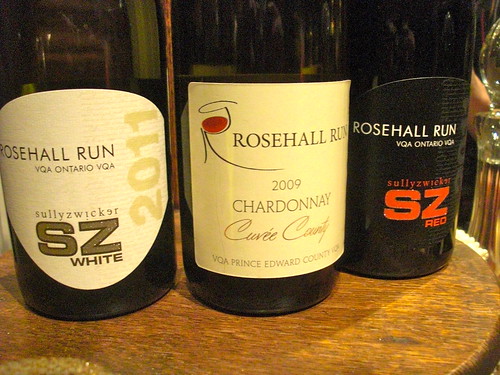
I love how this Prince Edward County winery has conducted its business from the very beginning, adding to its growing portfolio methodically and with a great deal of thought.
It has built its reputation on the staples of the County — Pinot Noir and Chardonnay — and rounded it out with a Cabernet Franc, that gets better and better with each passing vintage, and some other chosen treats like its $15 Sullyzwicker White and Red wines.
The Hillier, Ontario, winery is owned by Dan and Lynn Sullivan. Dan makes the wine and Lynn keeps everything under control on the business side.
The estate Rosehall Vineyard was planted in 2001 and the first harvest was in 2004. The wine is made in a gorgeous 7,200-square-foot winery and barrel cellar, which was completed in 2008.
Hillier is one of the driest areas of Ontario with a moderating easterly breeze from Lake Ontario. The winters, however, can drop to temperatures that may threaten survival of the crops. For this reason, all vines are covered with soil for the winter.
A total of 23 acres are planted to mainly Pinot Noir, Chardonnay, Ehrenfelser, Sauvignon Blanc with an annual production of 6,000 cases.
Here are three spring releases (Both the SZ Red and White 2011 are being released in May at the LCBO):
Rosehall Run SZ Red 2011 ($15, 87 points) — Fans of Rosehall will know that this repackaged wine is the formerly named Sullyzwicker, derived from a combination of Edelzwicker (a German term used to describe a basic blend of various varieties) and Dan Sullivan (and a nod Lynn’s family, the Zwickers). SZ is now the name all the “house blends” will be called. The SZ Red is a five-grape blend built for easy quaffing. It has a fruit-forward nose of cherry, blueberry and cassis. It’s medium bodied on the palate with good berry character, soft tannins and smooth through the finish.
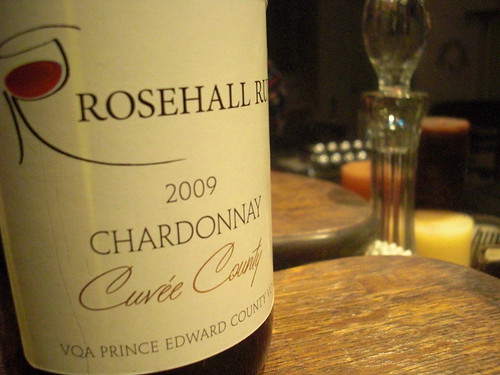 Rosehall Run SZ White 2011 ($15, 88 points) — A blend of seven grapes, the white is a great bargain wine with an expressive nose of fresh fruit including peach, citrus and apple. It’s slightly off-dry on the palate but balanced by decent acidity. It’s vibrant, clean and refreshing with apple, citrus and lime flavours.
Rosehall Run SZ White 2011 ($15, 88 points) — A blend of seven grapes, the white is a great bargain wine with an expressive nose of fresh fruit including peach, citrus and apple. It’s slightly off-dry on the palate but balanced by decent acidity. It’s vibrant, clean and refreshing with apple, citrus and lime flavours.
Rosehall Run Cuvee County Chardonnay 2009 ($22, at Vintages on July 7, 89 points) — Most of the fruit for this County Chard is sourced from young vines on the North and South blocks of the estate vineyard and aged in 500 litre French puncheon barrels, about 25% of it new oak. The nose shows gunflint, apple-pear fruit, smoky vanilla and brioche notes. It’s pure and racy on the palate with green apple, sharp acidity, pear-citrus, toast and vanilla to go with a defining vein of minerality through the finish.
Coffin Ridge Boutique Winery
This Grey County winery (near Owen Sound) is owned by Neil and Gwen Lamont and this year hired talented Niagara winemaker Steve Byfield, who also owns his own virtual winery Nyarai Cellars, to make the wines.
The winery is in its seventh vintage with 32 tonnes of grapes harvested from their own vineyard and over 65 tonnes of fruit processed in total for the 2011 vintage. A total of 4,000 cases will be made.
The winery grows an eclectic list of hardy-climate grapes including: Geisenheim 318, Frontenac Gris, La Crescent, Prairie Star, L’Acadie Blanc, Auxerrois (for the whites), Baco Noir, Marchel Foch, Marquette, Leon Millot, Frontenac, Sabrevois, DeChaunac and Chambourcin (for the reds).
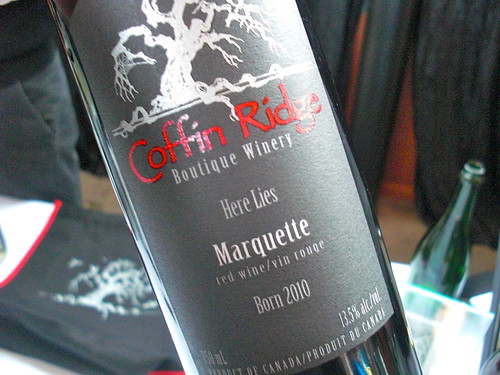 I tasted the Marquette, which, sadly, is not recognized by VQA, at a cider dinner (where the winery was also pouring its Forbidden Fruit Organic Cider) at Spencer’s at the Waterfront in Burlington a while back.
I tasted the Marquette, which, sadly, is not recognized by VQA, at a cider dinner (where the winery was also pouring its Forbidden Fruit Organic Cider) at Spencer’s at the Waterfront in Burlington a while back.
Here’s the review:
Coffin Ridge Marquette 2010 ($22, winery only, 88 points) — Marquette is a hybrid grape developed by the University of Minnesota’s viticultural program and is an off-shoot of Pinot Noir and native North American species. The nose is quite expressive with currants, black cherry, spice and chocolate notes. It’s quite concentrated on the palate with meaty red fruits, plums, cassis and mocha-chocolate notes through the finish.


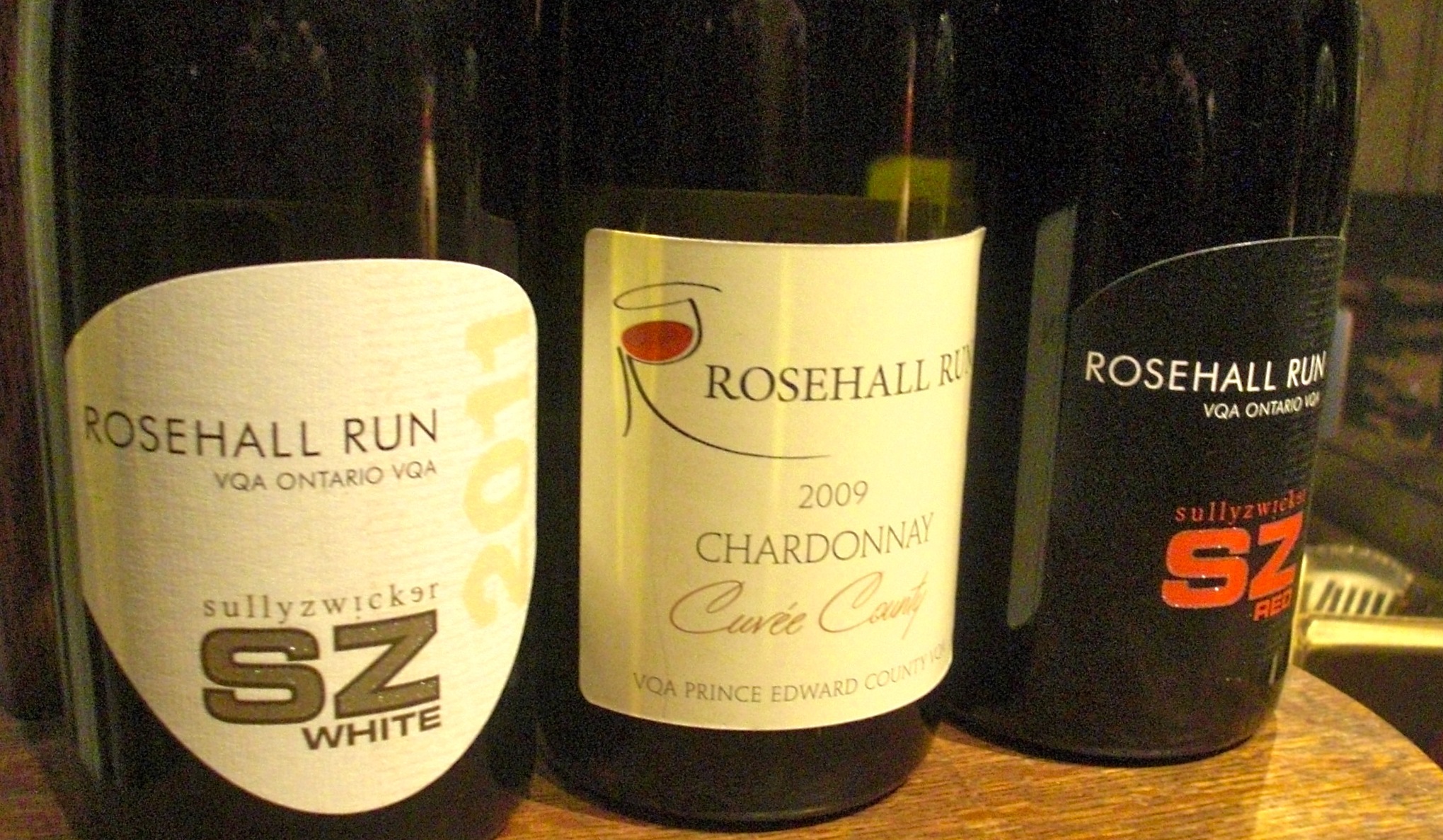




Comment here